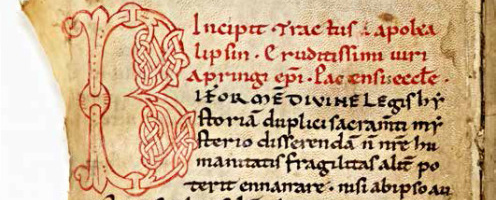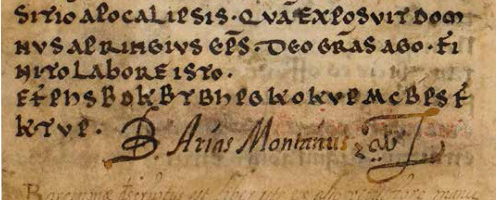4th of December
The oldest manuscript in the collection (kind of)
AM 795 4to is one of around 20 manuscripts in our collection to hail from Spain. It contains the Apocalypse of St John (Book of Revelation) and a commentary on it by the sixth-century churchman Apringius, bishop of Pace (now Beja) in Portugal. It is the only surviving copy of the latter to have survived from the Middle Ages.
It is a palimpsest meaning that it was written on used parchment which had been scraped clean. Although the underlying text is now in most places all but unreadable, there appear to be sections from four separate manuscripts, one of them a Forum Iudicum – the set of laws promulgated by the Visigothic king Chindasuinth in 642–643 – written in early Visigothic minuscule from the ninth century. This means that the parchment in AM 795 4to – a mixture of goat, sheep and calfskin – is, some of it at least, older by several centuries than anything else in the Arnamagnæan Collection - and even predates the settlement of Iceland.
The manuscript’s final rubric (shown above) reads:
explicit expositio apocalipsis. qvam exposvit domnvs apringivs episcopus. deo gracias ago. finito labore isto. efphsbdkbtbhpgkokvpmcbpsfktvp.
This last, seemingly incomprehensible, line merely repeats the previous line, ‘Deo gracias ago; finito labore isto’ (I give thanks to God; this effort is finished), using a simple displacement cipher, where b is used for a, c for b and so on.
You can leaf through the whole manuscript on Handrit.org
Contact
Katrín Þórdís Driscoll is a research assistant at the Dept. of Nordic Studies and Linguistics.
Phone: +45 3533 1660
katdris@hum.ku.dk
Anne Mette Hansen is asscociate professor at the Arnamagnæan Institute.
Telephone: +45 35 32 87 13
amh@hum.ku.dk


